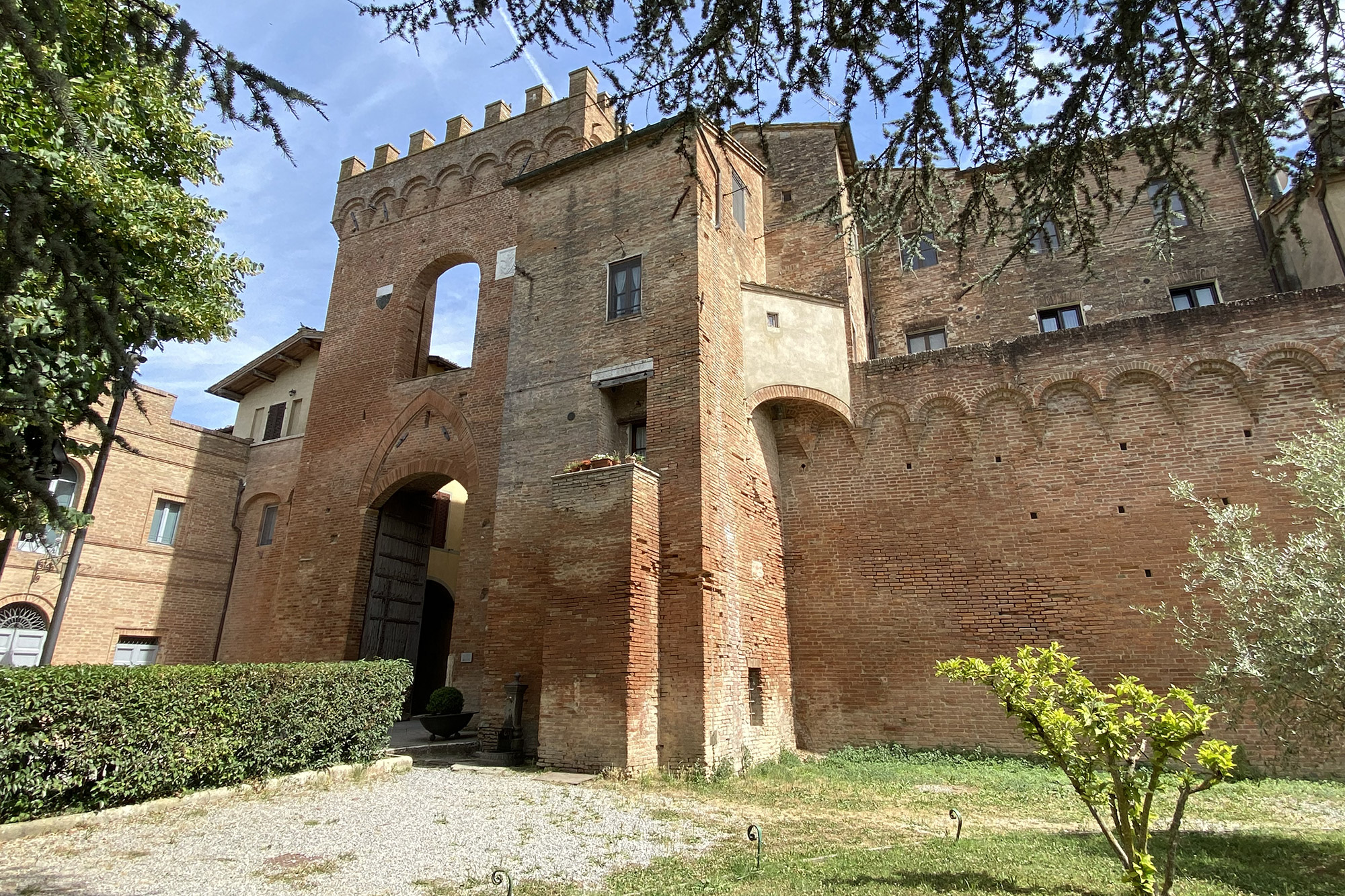
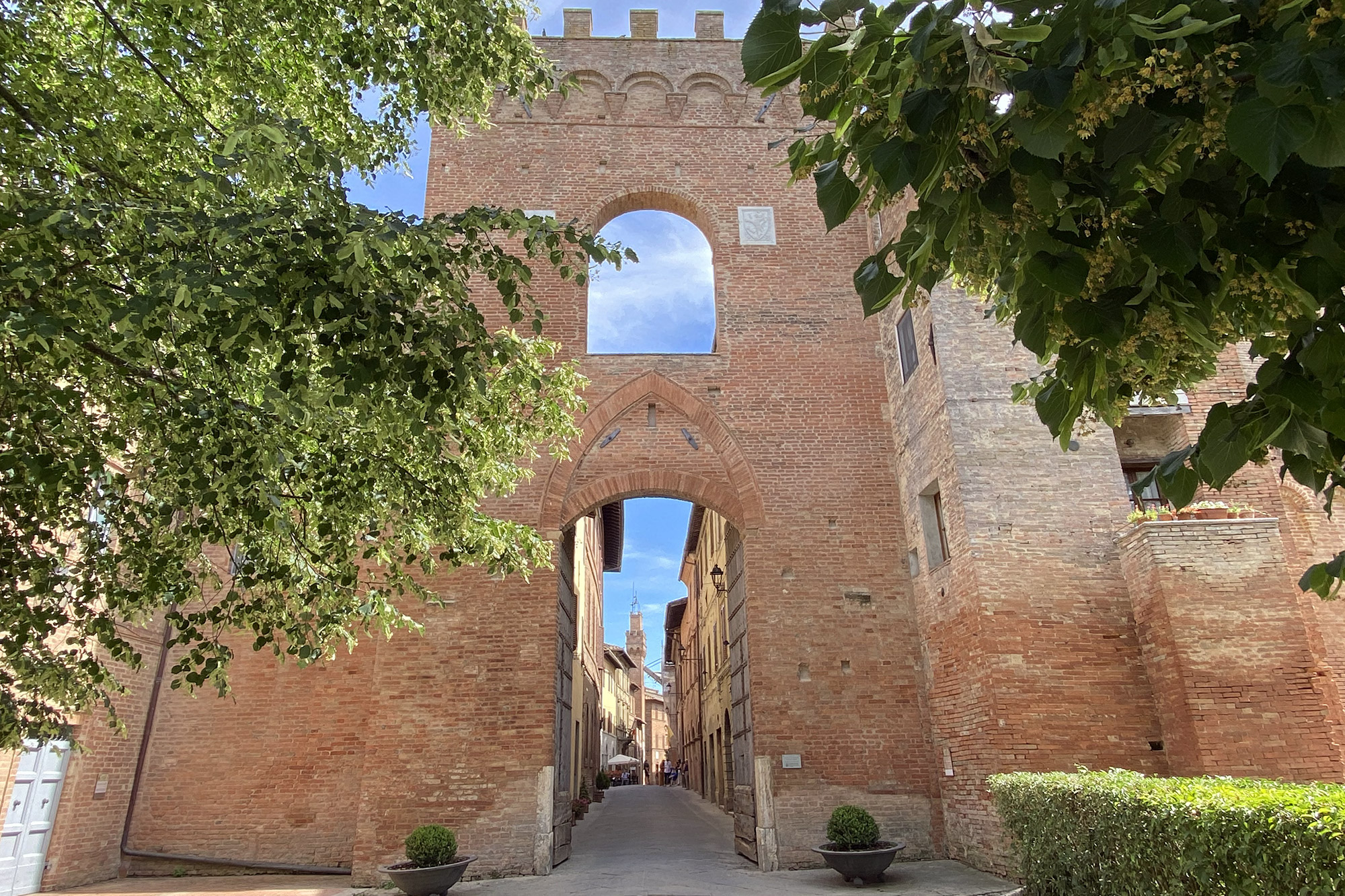
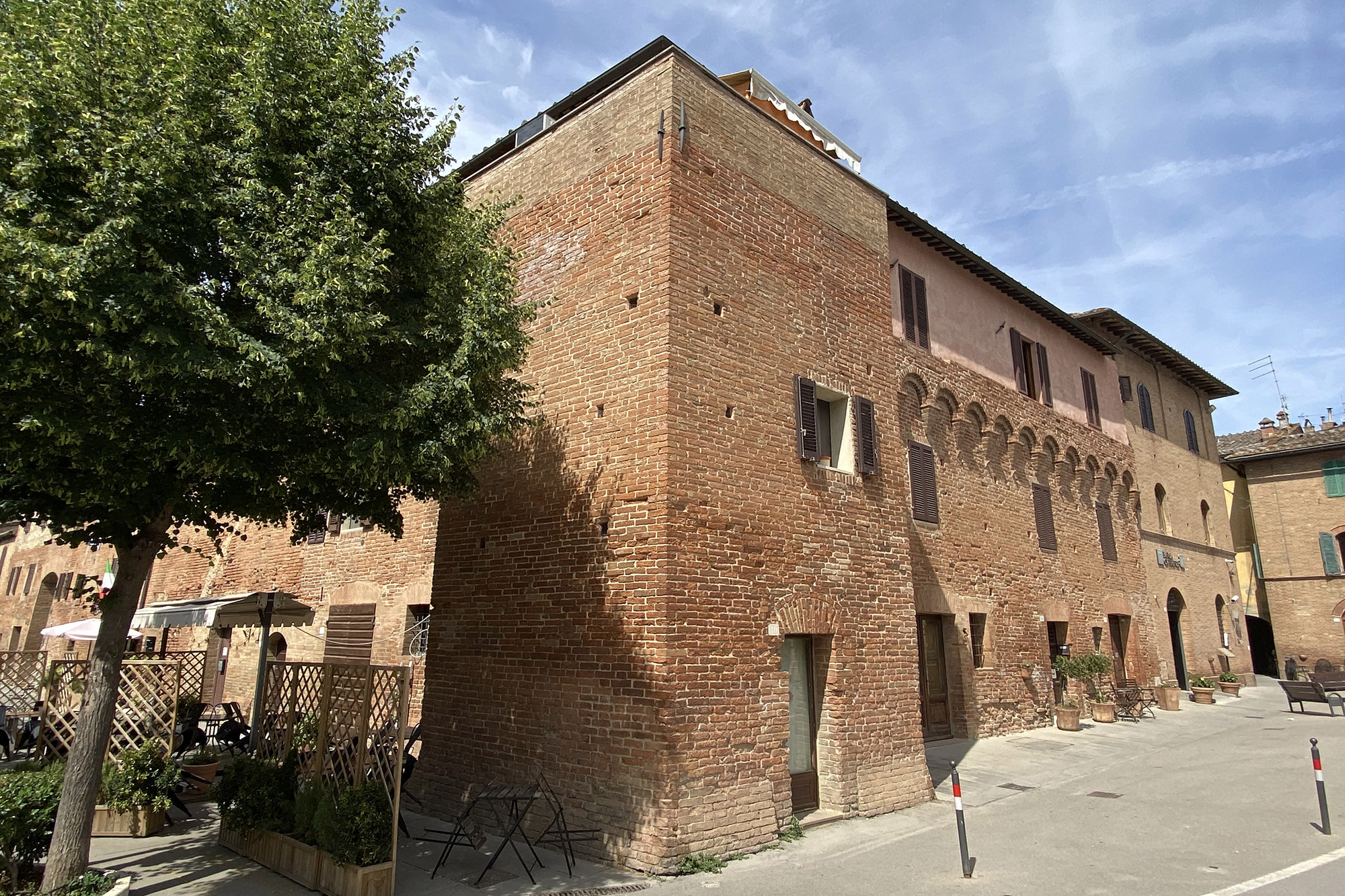
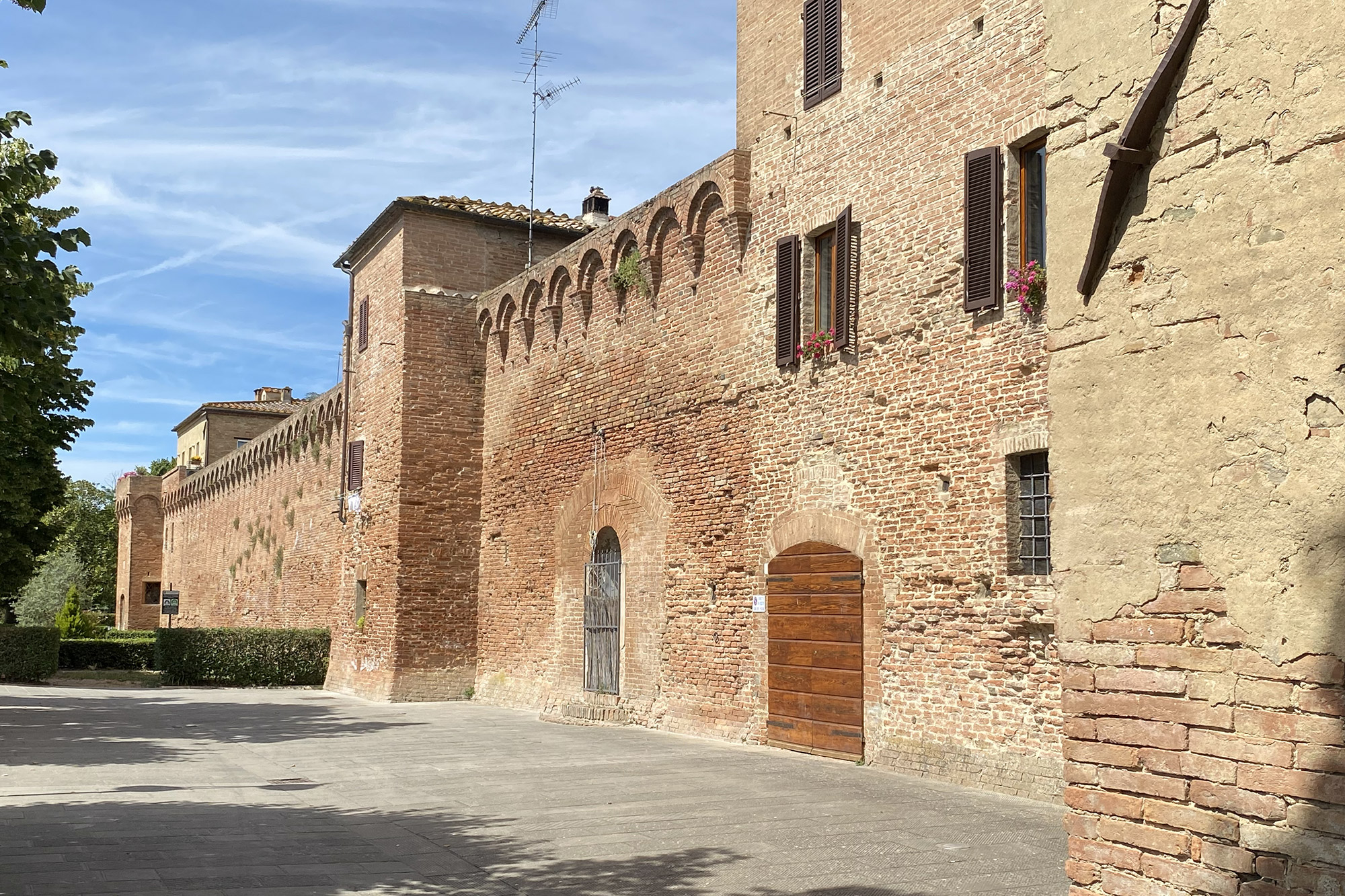
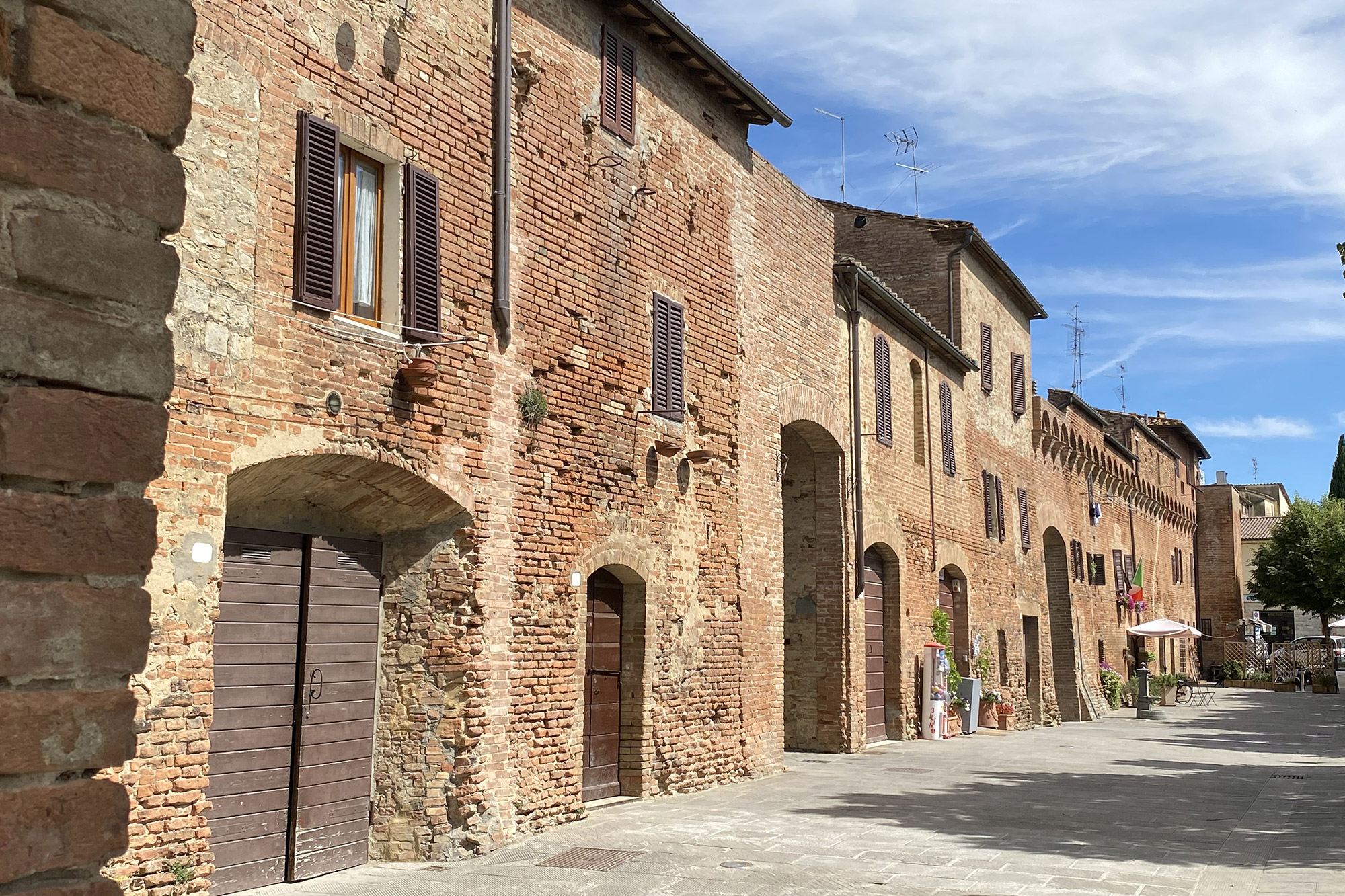
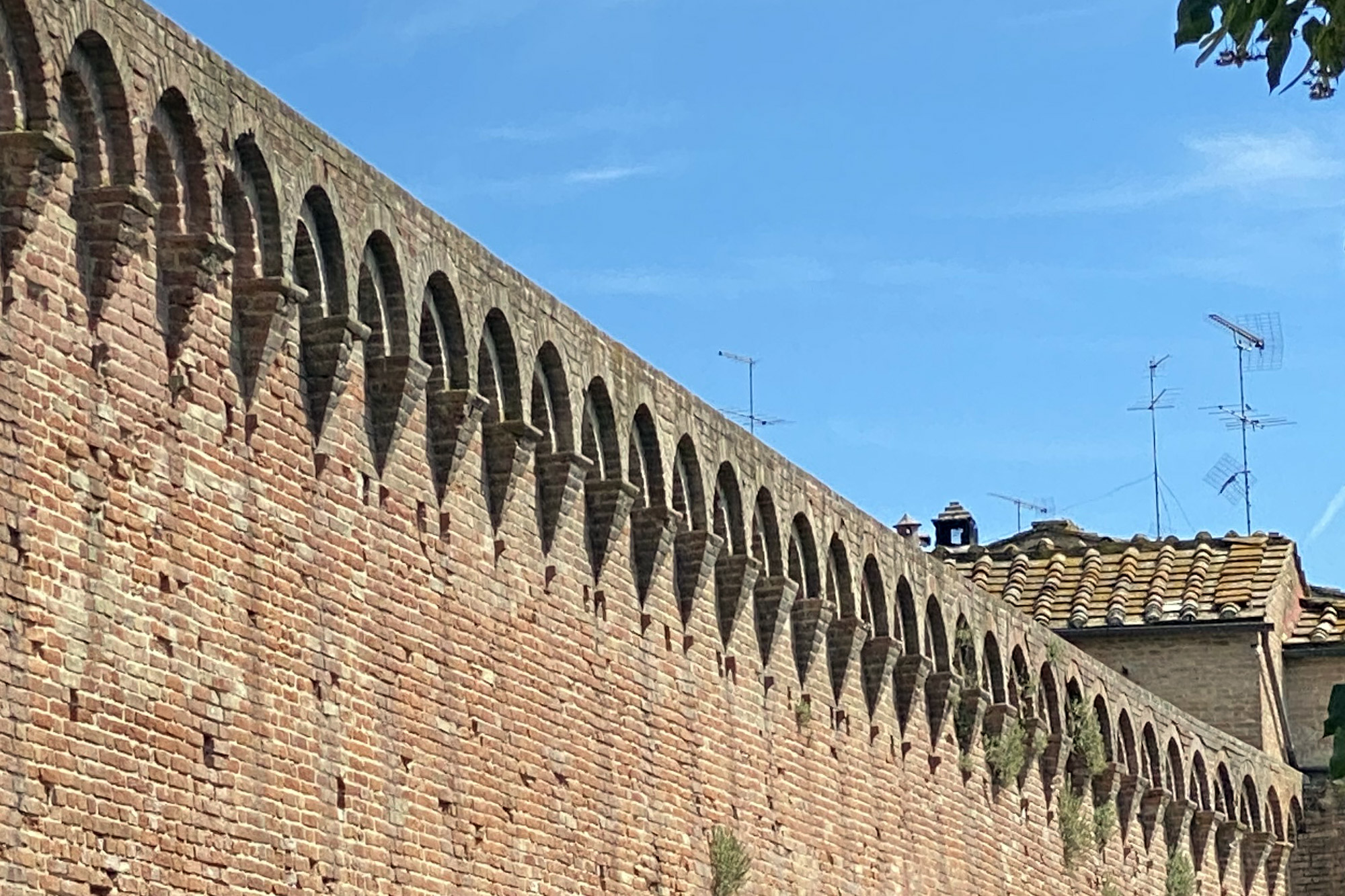
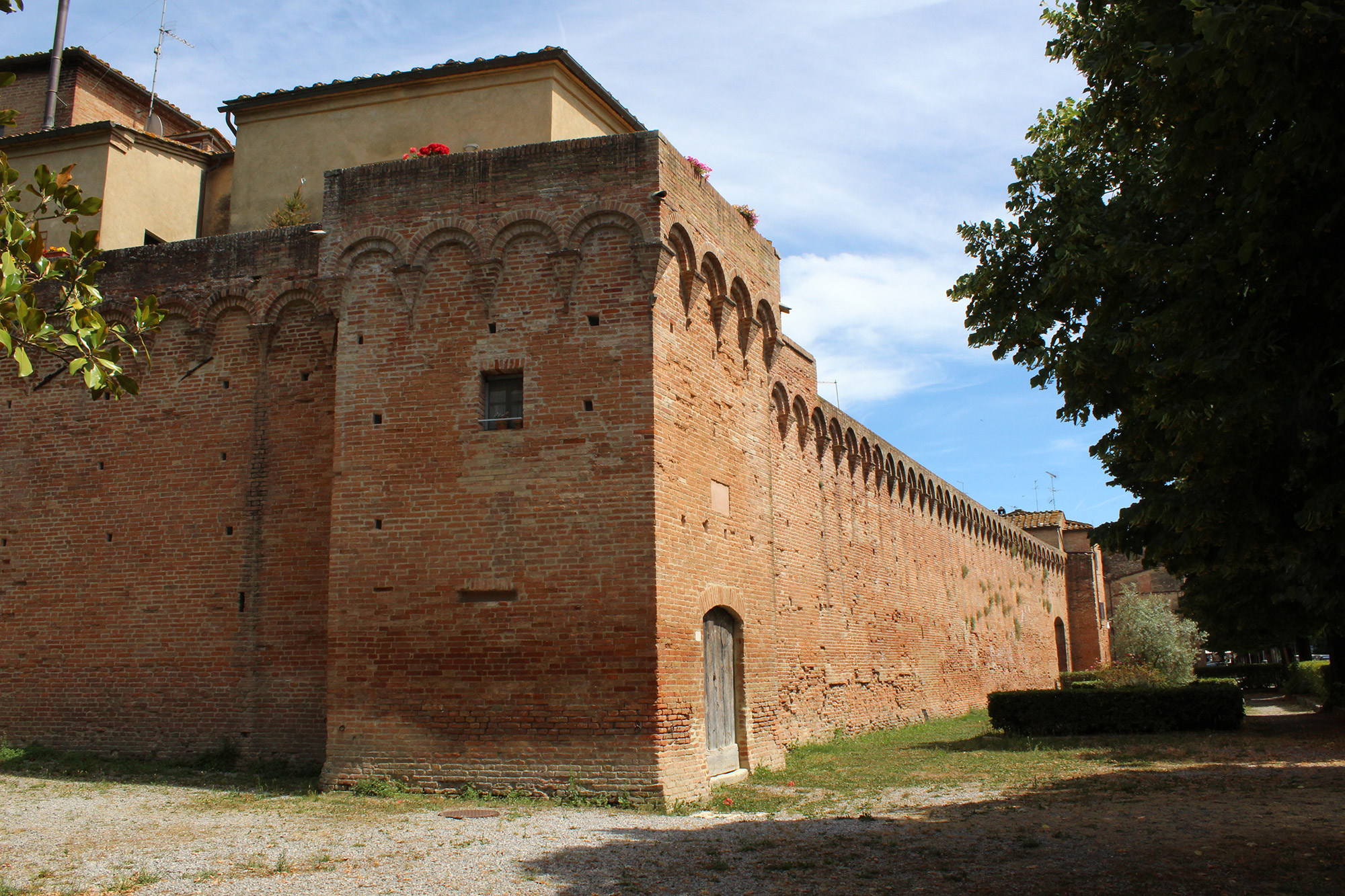
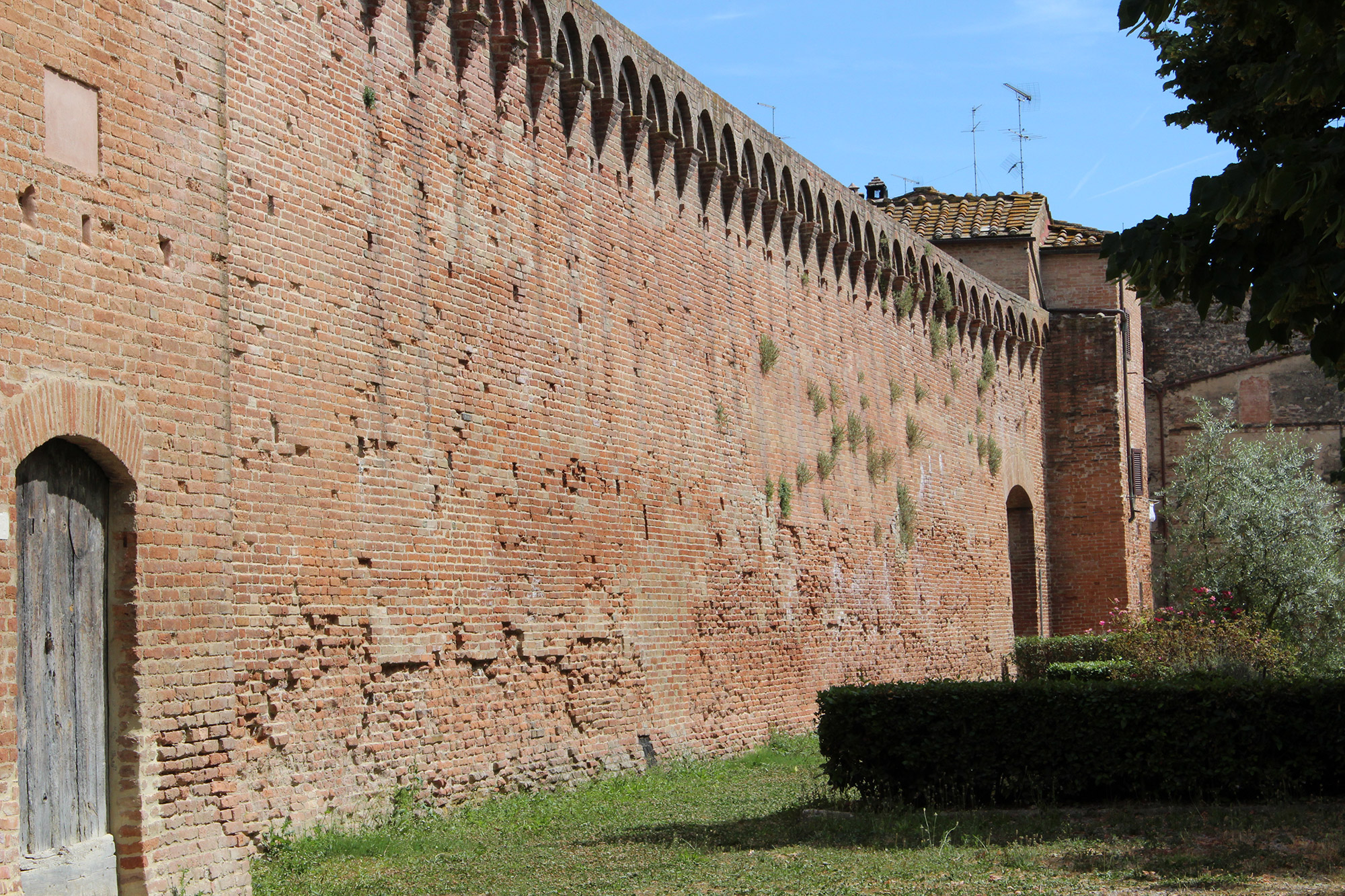
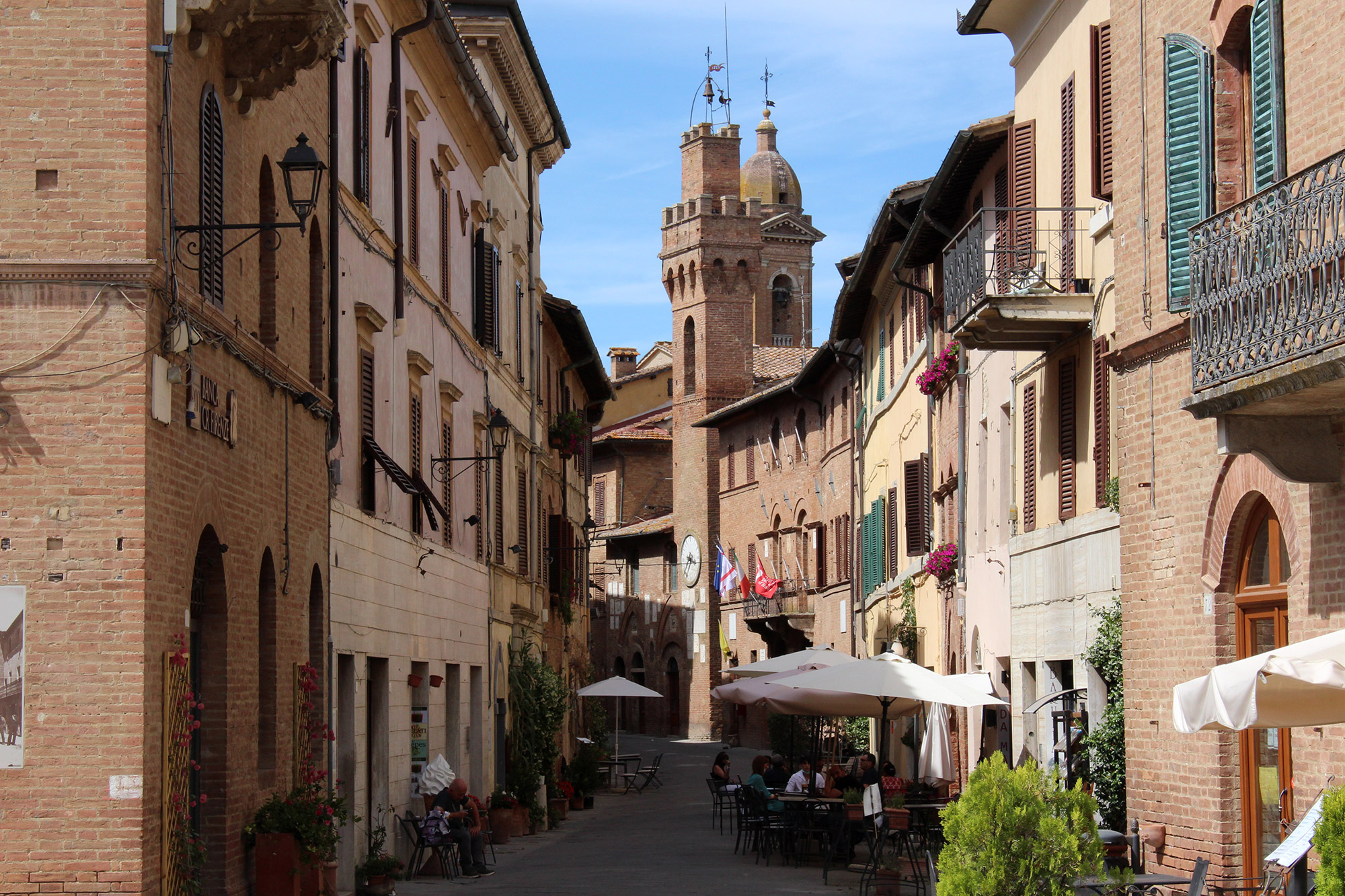
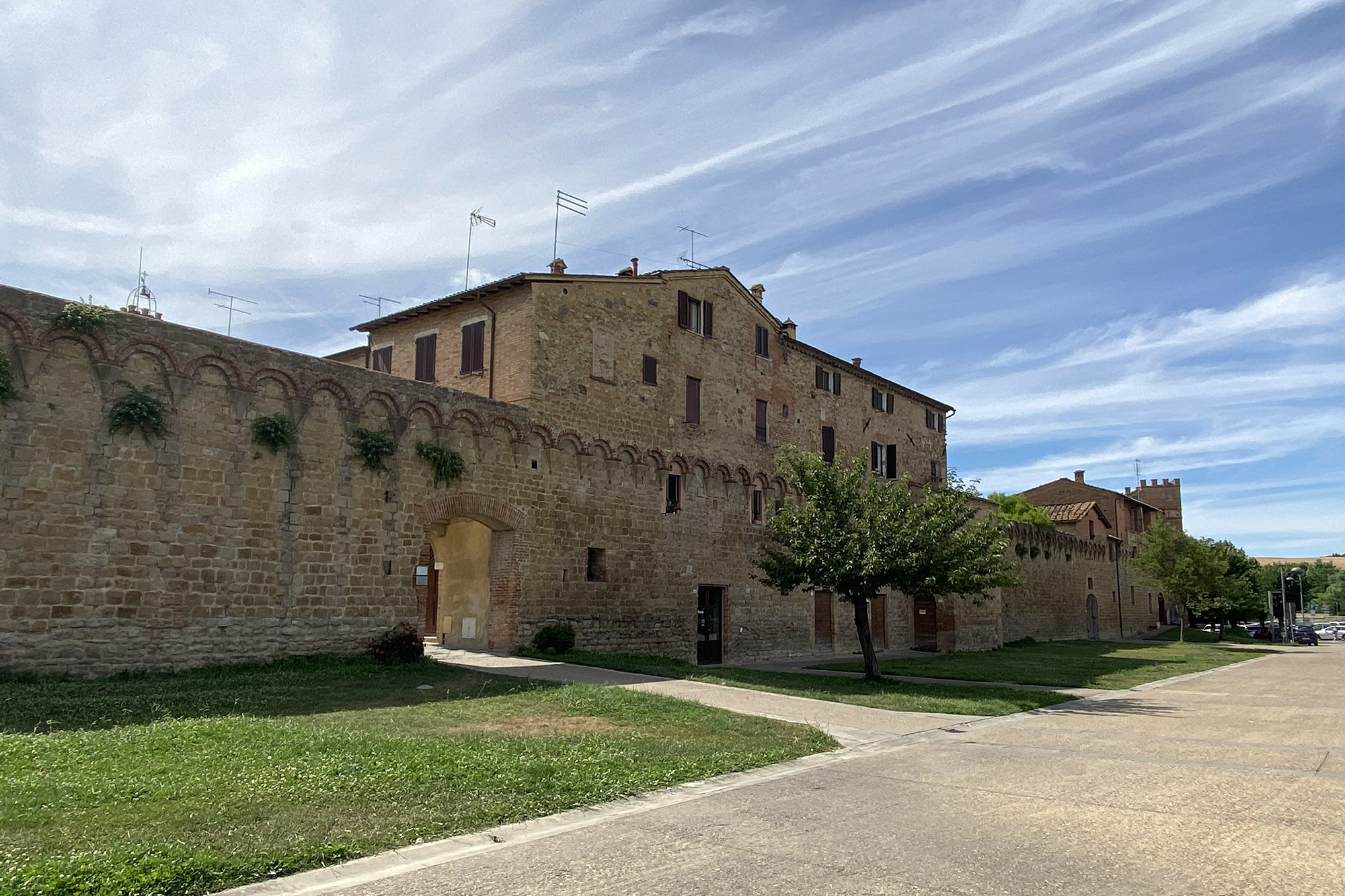
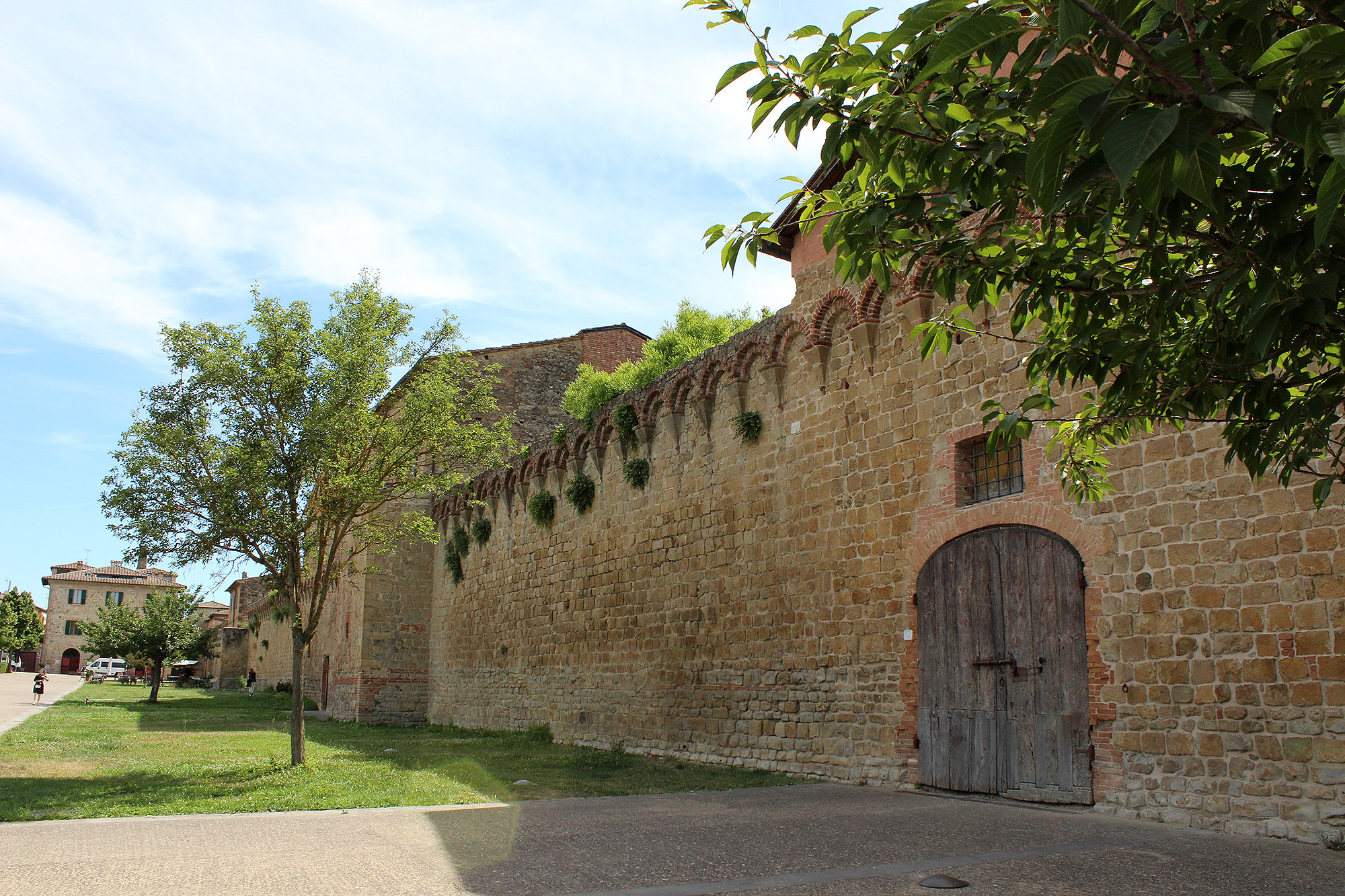
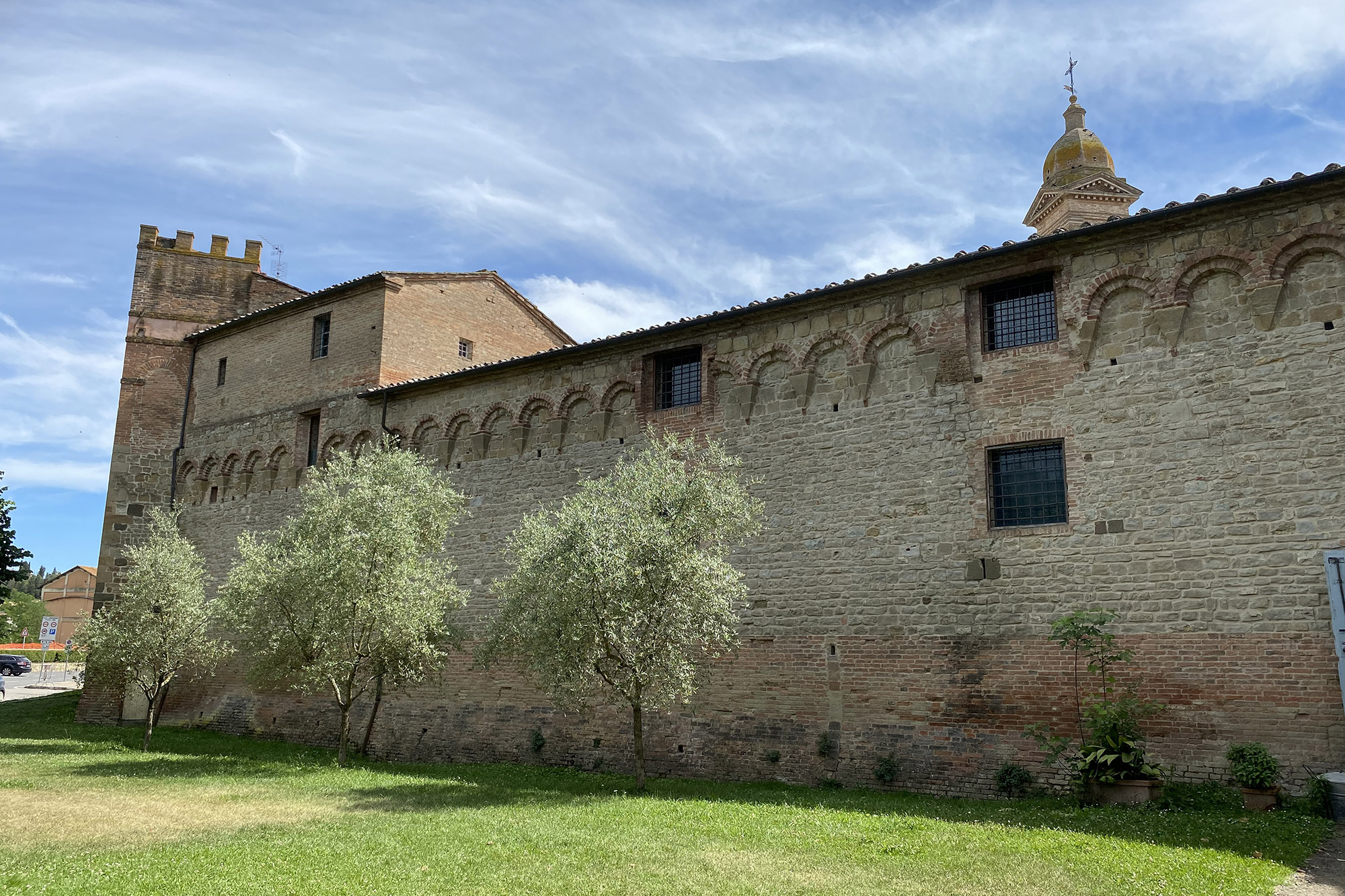












How to reach
Buoncovento is located between Siena and the Val d'Orcia, on the SS2 Cassia. It is the main centre of the Crete Senesi.
History
Between Siena, the Val d'Orcia, and the hills of Montalcino, along a plain tract of the Via Cassia, at the confluence of the Arbia and Ombrone rivers, Buonconvento shows signs of an intense medieval past. Here was the urban section of the Via Francigena. Near the village, on August 24, 1313, Emperor Henry VII of Luxembourg died. He stopped here with his army, and Dante had entrusted him with the Ghibelline hopes of redemption in Italy.
The town walls have always been Buonconvento's strength and pride, even though the original ones were destroyed by Perugia's army in 1358 during the war against Siena. The historic centre of the Borgo is enclosed in the rectangular plan conferred by the new walls built, using terracotta bricks, by the Sienese between 1371 and 1385 to confirm its strategic importance and is still largely intact today.
Since then, Buonconvento (from the Latin Bonus Conventus, "happy, fortunate place") has once again become a safe stopover only a day's journey from Siena to Rome. In 1455, the walls were further strengthened with a tower at the gateway to Siena and an anti-port on the south front. All around the walls there was a moat, which no longer exists, and they were crowned by crenellations to defend the inner wall walk. In 1799, the bricks from the battlements were removed and used to restore the Church of Saints Peter and Paul, and in 1832, the anti-port was demolished because it hindered the traffic of carts and carriages. The town has had a Podesta seat since 1270 and also has a fine Town Hall, whose façade bears the coats of arms of 25 Podestas.
Buonconvento still has its monumental Porta Senese, facing north, while the Porta Romana, on the south side, has disappeared, destroyed along with a section of the walls in 1944 by a mine from the retreating German troops.
The walled circuit is still recognisable today, although in many parts incorporated in the houses built during the major transformations undergone by the village during the 19th century are many section and corner towers and great parts of the machicolation decorated with rounded arches and projecting brackets. In the last decade, all the walls have undergone major restoration and redevelopment.
Finally, there are numerous castles in the surrounding area, such as the ultra-millennial fortress of Bibbiano Guiglieschi, the tower of Bibbiano and the large architectural complex of Castelnuovo Tancredi.